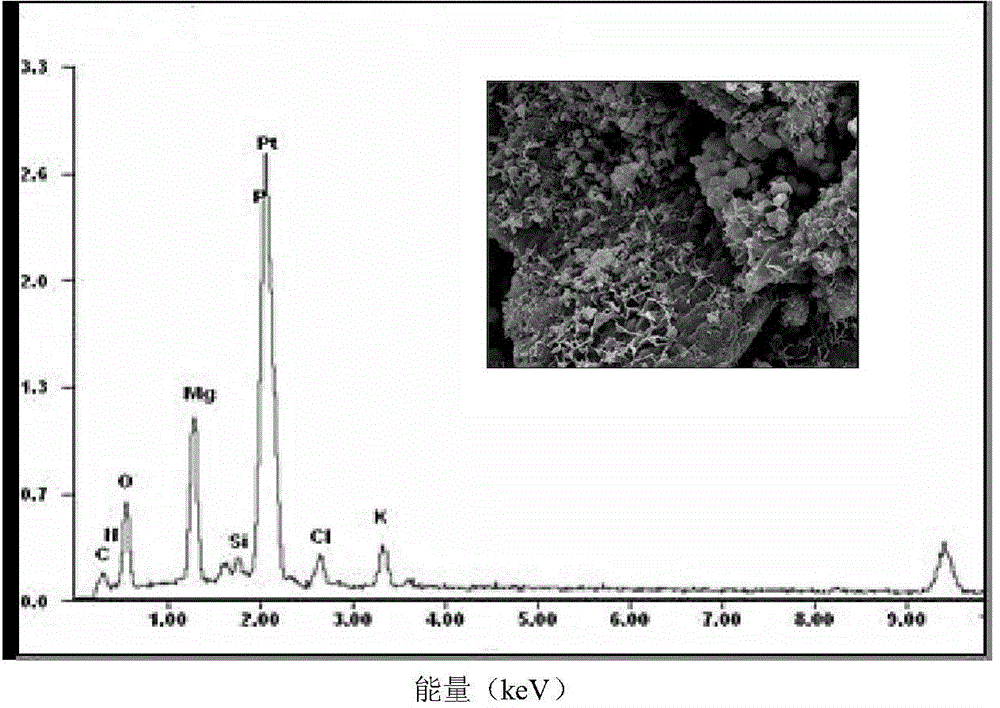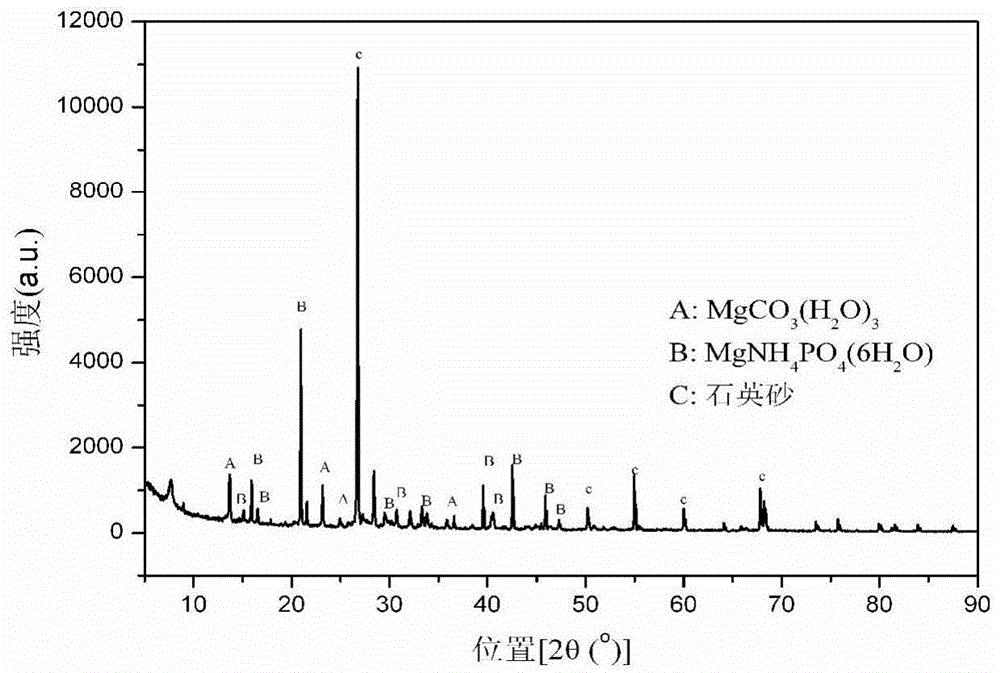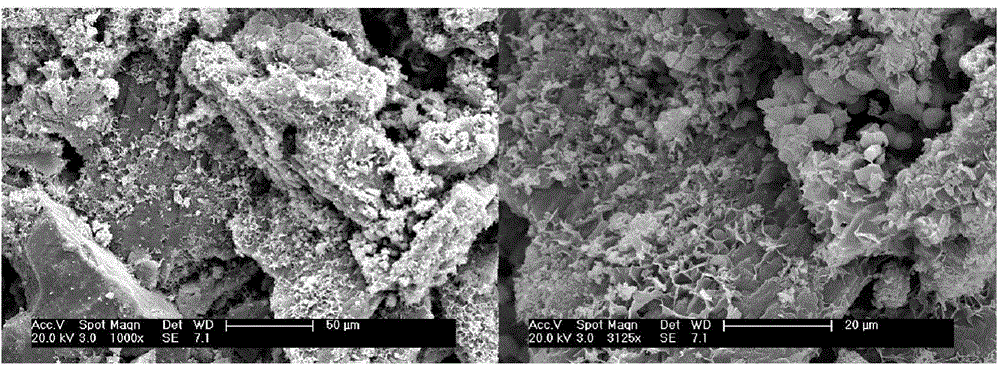Method for concreting loose sand particles through biological phosphate/carbonate composite cementing material
A technology of composite cementitious materials and phosphate, which is applied in the field of foundation reinforcement, bio-phosphate and carbonate composite cementitious materials to consolidate loose sand particles, and can solve the problems of large capital investment, unfavorable large-scale application, environmental damage, etc. problems, to achieve the effect of small investment, avoid waste of resources, and less pollution
- Summary
- Abstract
- Description
- Claims
- Application Information
AI Technical Summary
Problems solved by technology
Method used
Image
Examples
Embodiment 1
[0027] First, 1 mol K 2 HPO 4 The solid was completely dissolved in the pasteurized bacteria liquid (1 L) to obtain a phosphate bacteria liquid. Prepare 1L (1mol / l) urea and (2mol / l) magnesium chloride mixed solution. Pumping cemented high 6cm diameter 3cm quartz sand column (medium sand: 0.15-3.0, 90% fine sand: <0.15, 10%). First, 25ml of phosphate bacteria solution was pumped and injected into the sand column at 8ml / min, then 25ml of urea and magnesium chloride mixed solution was pumped and injected into the sand column at 6min / ml, and then 25ml of phosphate bacteria solution was injected into the sand column. After standing at 30°C for 1.5h, inject 25ml of mixed solution of urea and magnesium chloride into the sand column; then inject 25ml of phosphate bacteria solution into the sand column, after standing at 30°C for 1.5h, and so on, until it cannot be injected until the sand column. The belt mold was placed in an oven at 45°C for 14 days, and after the mold was remov...
Embodiment 2
[0029] First, 1 mol K 2 HPO 4 The solid was completely dissolved in the pasteurized bacteria liquid (1 L) to obtain a phosphate bacteria liquid. Prepare 1L (1mol / l) urea and (2mol / l) magnesium chloride mixed solution. Pumping cemented high 6cm diameter 3cm quartz sand column (medium sand: 0.15-3.0, 90% fine sand: <0.15, 10%). First, 25ml of phosphate bacteria solution was pumped and injected into the sand column at 10ml / min, and then 25ml of urea and magnesium chloride mixed solution was pumped and injected into the sand column at 8min / ml, and then 25ml of phosphate bacteria solution was injected into the sand column. After standing at 30°C for 2 hours, inject 25ml of mixed solution of urea and magnesium chloride into the sand column; then inject 25ml of phosphate bacteria solution into the sand column, after standing at 30°C for 2 hours, and so on, until the sand column cannot be injected until. The belt mold was placed in an oven at 45°C for 14 days, and after the mold w...
Embodiment 3
[0031] Configuration 1 first converts 1 mol K 2 HPO 4The solid was completely dissolved in the pasteurized bacteria liquid (1 L) to obtain a phosphate bacteria liquid. Prepare 1L (1mol / l) urea and (2mol / l) magnesium chloride mixed solution. Pumping cemented high 6cm diameter 3cm quartz sand column (medium sand: 0.15-3.0, 90% fine sand: <0.15, 10%). First, 25ml of phosphate bacteria solution was pumped and injected into the sand column at 16ml / min, then 25ml of urea and magnesium chloride mixed solution was pumped and injected into the sand column for 10min / ml, and then 25ml of phosphate bacteria solution was injected into the sand column. After standing at 30°C for 2 hours, inject 25ml of mixed solution of urea and magnesium chloride into the sand column; then inject 25ml of phosphate bacteria solution into the sand column, after standing at 30°C for 2 hours, and so on, until the sand column cannot be injected until. The belt mold was placed in an oven at 45°C for 10 days,...
PUM
 Login to View More
Login to View More Abstract
Description
Claims
Application Information
 Login to View More
Login to View More - R&D
- Intellectual Property
- Life Sciences
- Materials
- Tech Scout
- Unparalleled Data Quality
- Higher Quality Content
- 60% Fewer Hallucinations
Browse by: Latest US Patents, China's latest patents, Technical Efficacy Thesaurus, Application Domain, Technology Topic, Popular Technical Reports.
© 2025 PatSnap. All rights reserved.Legal|Privacy policy|Modern Slavery Act Transparency Statement|Sitemap|About US| Contact US: help@patsnap.com



